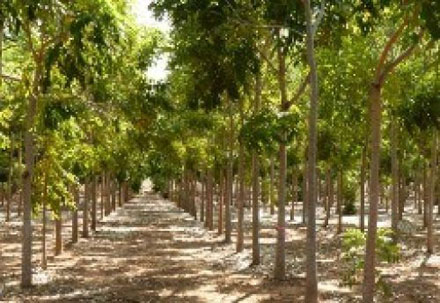
Fifteen to 20 years ago, north Queensland cane farmers and woolgrowers alike were seeking alternate income streams to offset industry downturns, and for some, African mahogany hardwood plantations were an appealing option. Source: Queensland Country Life
They especially liked their suitability for the dry tropics and so hundreds of hectares of the fast-growing hardwood tree were planted throughout the region.
Fast forward to 2018 and a focus on how best to process and market the raw product coming to maturity, and a federal Farming Together grant worth $125,000 has entered the picture.
Former Richmond wool producer, Sandra Richards, now one of the key figures in the Mahogany Processor Cooperative Limited, based in Townsville, said the funding was providing the opportunity to look at a range of innovative ideas.
“The industry doesn’t have any static mills so we’re looking at portable ones, versus just sending logs to China,” she said.
Another alternative for an emerging industry that seems to be spoilt for choice is to concentrate on domestic niche opportunities.
“We sent a container load of thinnings to China a couple of years ago, and they were delighted but if it’s as good as we think, they might want more than we can supply,” said Sandra.
“We might decide to concentrate on domestic markets instead.”
Maturing plantations exist in a number of places around the north – 150ha between Bowen and Ingham, a 300ha former managed investment scheme at Cooktown, even a plot of trees at Julia Creek.
For a timber that’s listed as endangered in its home country of Africa, there are a wide range of possible uses being investigated. The bark of the tree is used for traditional medicine in Africa, and Sandra said its properties had been tested by Melbourne University.
“The head of the tree too, we’re looking at how it supplies calorific values for bioenergy,” she said.
Add to that mill representatives from Maryborough that have come up to view the origin of the fine timbers, and Sunshine Coast guitar makers.
“The demand is there,” Ms Richards said. “We were once in the age of steel and concrete, but hopefully the age of timber is coming.”
International forest consulting and data management company, Interpine, recently had representatives travel from New Zealand to measure a large plantation of mahogany trees in the Northern Territory, and were engaged to undertake similar work in north Queensland.
Ms Richards said they were expecting to receive that report shortly.
“We’ve proved this timber grows well – it’s the first trees I remember seeing in Richmond – and it’s certainly drought resistant.”





